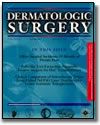Fat Transfer Techniques

Dermatologic Surgery
2001 Abstract
0109-819 Shiffman
Shiffman MA, Mirrafati S.
Fat transfer techniques: the effect of harvest and transfer methods on adipocyte viability and review of the literature. Dermatol Surg. 2001 Sep;27(9):819-26. PMID: 11553171
BACKGROUND:
Autologous fat transplantation is an excellent tool for filling defects and augmenting tissue. The literature provides a variety of reports with varying degrees of success or failure. The procedure is operator dependent and relies on the techniques of harvesting, cleansing, and reinjection.
OBJECTIVE:
To evaluate various retrieval and reinjection techniques to see their effect on the viability of the fat cells.
METHODS:
Fat was removed from five patients utilizing various cannulas, needles, suction pressures, and centrifugation for collection and reinjection. Preoperative external ultrasound and massage were evaluated as well as the use of the ratchet gun for injection. The fat was routinely cleansed of blood and tumescent solution products by means of washing with normal saline and then decanting repeatedly until the infranatant solution was clear.
RESULTS:
Histologic examination of the fat cells showed the central core of fat and edges of the core had 98-100% intact cells (presumably viable) in every specimen except when -700 mmHg vacuum was used for fat collection where cell damage was greater than 10% and when preoperative massage was performed where cell damage was 30%. Preoperative external ultrasound did not appear to damage the fat cell but did disrupt some of the fibrous tissue holding the fat cells in large bundles.
CONCLUSION:
The variety of techniques used to collect, clean, and reinject fat do not damage the fat cells except for the collection of fat at -700 mmHg vacuum. External ultrasound, preoperatively, does not destroy fat cells but produces smaller bundles of fat. The ratchet gun does not result in increased fat cell loss. Preoperative massage causes 30% cell loss and deformation of 80% of the remaining cells.
